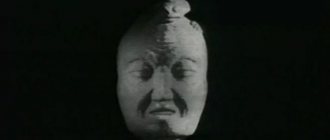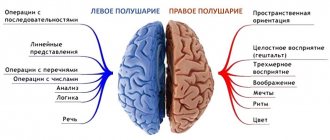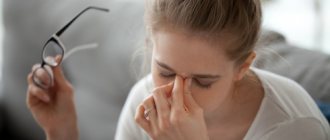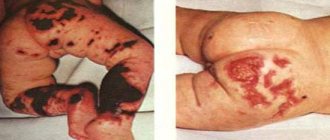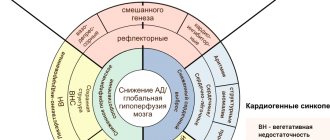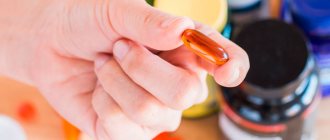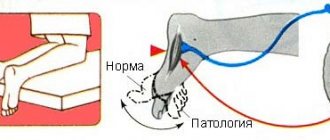general information
Despite the fact that a newly born baby is a defenseless creature, it already has more than seventy-five unconditioned reflexes. It is thanks to these mechanisms that a person survives and adapts to new conditions.
Each of the innate reflexes is relevant in the first three to five months. After this period, they gradually fade away, giving way to conditioned reflexes.
Every parent should know what reflexes their children have. This will help them prevent the development of serious illness.
The proboscis reflex, like the sucking one, is associated with the most important process necessary for the full development of personality - the absorption of food.
Physiological (transitional) conditions of newborns
Author: pediatrician of the Children's Medical Center "Tiger Cub" Zharkov P. A.
A baby has appeared in your family and this is truly a grandiose event in your life. All the time while your child was in his mother’s belly, you were anticipating his birth, thinking about what color his eyes and hair would be, how your girl or boy would cuddle with you for the first time, hug you with his arms. Probably, the feelings you are experiencing now can be called happiness. And that’s why you are especially attentive to your child and worry that there might be something wrong with him.
During intrauterine development, the baby is relatively limited from the influences of the world around his mother. He is warm, nutrients are constantly supplied, muffled sounds are heard from somewhere in the distance, etc., but from the moment of birth this comfort disappears: the child hears millions of sharp sounds, harsh light, someone’s hands do not allow him to lie quietly, various smells are all around , changes in ambient temperature and constant tactile irritation, and the baby still has to breathe, suck and somehow adapt to the new and not very pleasant world around him. In pediatrics there is such a concept - physiological, that is, “correct, not related to illness” or transitional states of a newborn, which precisely show how your baby adapts to his new life.
What can mom notice?
1. Physiological jaundice of newborns. Somewhere on the 2-3rd day after birth, the skin, and sometimes the mucous membranes (especially the eyes) of your baby may acquire a yellowish tint. This condition is observed in approximately 70% of newborns and is due to the fact that some enzymes (the most important chemical compounds leading to the breakdown of certain substances) in the child’s body do not yet work at full strength and bilirubin (a specific metabolic product) accumulates, which stains the skin and mucous membranes of your baby. Stool and urine retain their normal color. As a rule, jaundice subsides by 10-14 days of life and if the child’s health remains satisfactory, no treatment is required. If there is noticeable weight loss, lethargy, or passivity of the child, as well as if jaundice appears on the first day of life, you should immediately contact a pediatrician, because this condition is not typical for physiological jaundice.
2. Physiological erythema - redness of the child’s skin which is caused by the removal of vernix lubrication from the child’s skin. The baby is covered with this lubricant even in utero, when it is removed in the birthing room, the baby’s skin comes “face to face” with the outside world for the first time and its inflammation occurs. This condition intensifies on the 3rd day of life and disappears by the end of the first week and does not require treatment. After the resolution of physiological erythema, as a rule, physiological peeling occurs, which is more pronounced on the baby’s abdomen and chest. In case of severe peeling, the child’s skin can be lubricated with baby cream. About a third of newborns may experience erythema toxicum, a kind of allergic skin reaction to environmental influences. With this condition, reddish, slightly dense spots form on the skin, sometimes with bubbles in the center. These elements are usually located on the legs and arms around the joints, on the buttocks, chest, and less often on the stomach and face. Although, as a rule, toxic erythema does not require specific treatment, it is still better to consult a doctor because this condition is easily confused with skin diseases. 3. Birth tumor - swelling of the presenting part of the body, i.e. the part that was closer to the exit from the birth canal and which experienced increased pressure during childbirth is often located on the head. Lasts 1-2 days. Sometimes small pinpoint hemorrhages appear at the site of the birth tumor and disappear on their own. Does not require treatment.
4. Difficulty breathing. In the first days of life, it may seem to the mother that the baby is “breathing heavily.” Periodically, your child takes a deep breath and seems to “hold” his breath, and then exhales slowly. The fact is that even after birth, the lungs do not function fully, and with such breathing the baby subconsciously increases the pressure in the lower respiratory tract and “straightens” the lungs. This process usually takes no more than 5 days. However, the mother should pay attention to how the child is breathing - if you hear whistling, wheezing or difficulty breathing, and also if the child is breathing too quickly or too rarely (on average, a newborn makes 30-50 breathing movements per minute) or his breathing is “stuttered” and the baby does not breathe for some time, you must immediately consult a doctor.
5. Physiological weight loss. During the first ten days of life, a healthy newborn may lose up to 10% of his birth weight. This is due, first of all, to increased evaporation of fluid during breathing and insufficient supply from the outside. Do not forget that earlier initiation of breastfeeding contributes to less weight loss.
6. Physiological dyspepsia, dysbacteriosis. During a normal pregnancy, your baby does not encounter bacteria during intrauterine development, however, already in the first day of life after birth, rapid growth of microorganisms is observed on the skin, mucous membranes, inside the intestines and respiratory tract, and this is normal (of course, if this flora is not pathogenic and not infection occurred) because These bacteria are essential for the functioning of digestive processes and the protection of your baby. Initially, for the first three days, original meconium is released - thick, dark green stool that was formed in utero. Then patches of yellow and whitish color appear in it, bowel movements become more frequent - from dense lumps to a liquid consistency. This physiological dyspepsia does not last long. After 2-4 days, the feces become mushy, uniformly yellow in color - a permanent stool is established, which indicates the normal growth of bacteria in the intestines that normalize digestion.
7. Sexual crisis. The fact is that during intrauterine development, the fetus receives constant hormonal stimulation by the mother’s sex hormones; at birth, the child’s own endocrine system begins to work more actively and a transient sexual crisis occurs. One of the manifestations is engorgement of the mammary glands (in both girls and boys) with a maximum increase on the 7-8th day, usually disappears by the end of the month. You should not try to squeeze out secretions from hardened mammary glands, because... this leads to their infection and the development of mastitis. In the first 2 days of life, the vaginal mucosa may become inflamed. Abundant grayish-whitish discharge appears from the genital slit, which disappears on its own on the third day. It is recommended to wash girls with a weak solution of chamomile, St. John's wort, and string. These herbs have disinfecting properties. You should not wipe your genitals with force because... The mucous membrane of newborns and children is very delicate and can be easily injured, which can lead to both infection and the formation of adhesions that will have to be removed surgically. More rare manifestations of a hormonal crisis are: swelling of the external genitalia - labia, penis, scrotum, which can last 1-2 weeks or more, darkening of the skin around the nipples and skin of the scrotum. Hydrocele of the testicle is an accumulation of fluid between its membranes, while the size of the scrotum is increased in size. Sometimes it goes away only at the end of the first month of life on its own and does not require treatment. 8. Physiological disturbances in thermal balance are associated with imperfect thermoregulation of newborns, who cannot maintain a constant body temperature and react to any changes in it indoors or outdoors. While your baby has not yet been born, he is in conditions of constant temperature and humidity, but after birth, the baby’s body is forced to cope with maintaining a constant body temperature. Due to the structural features of their skin, rich in blood vessels and capillaries and poor in sweat glands, the child quickly overheats or becomes hypothermic. When a newborn excretes more fluid than he receives during feeding, this is expressed by anxiety, dry mucous membranes, an increase in temperature to 38 ° C or higher, and thirst. If the body temperature rises, immediately call a doctor, undress the child and wipe the skin with a semi-alcohol solution, give the baby plenty of sweet tea or boiled water. Do not try to lower your temperature with pharmacological drugs yourself! If the baby’s temperature, on the contrary, is low, which most often happens in the first hours of his life, he should be quickly wrapped in sterile diapers (ironed if the birth took place at home) and placed on a changing table under a lamp. A constant body temperature is established, as a rule, by the middle of the first day. This article does not list all the transitional states of newborns, but the most obvious and common features are presented. One way or another, medical doctors recommend that parents be sure to consult a pediatrician as soon as possible after being discharged from the maternity hospital. This is especially true in cases where there was any pathology during pregnancy or childbirth or if you have any doubts about the health of your baby.
Important reflexes
The main reflexes that provide a baby with a comfortable existence in the first months of his life in new conditions include:
- Sucking reflex.
- Swallowing reflex.
- Proboscis reflex.
- Ref. Babkina.
- Search refl-s.
- Upper protective refl.
In newborns
The proboscis reflex in newborns is characterized by a specific protrusion of the child’s lips. In response to the stimulus, the baby’s lips take on a specific “tube” or “proboscis” shape. This mechanism is caused by a quick, sharp touch to the actual areas of the fingers of the parent or doctor.
The proboscis reflex in newborns is caused by the automatic contraction of the orbicularis oris muscle of the newborn. The orbicularis muscle is a key muscle called the sucker.
According to experts, the proboscis reflex is relevant in the first two to three months of a child’s life, after which it fades. There is also an opinion that normally the proboscis reflex in newborns can occur until the baby reaches the age of two and a half to three years.
In this case, the mechanism is presented in the form of a protective-adaptive reaction.
In adults
The proboscis reflex in adults indicates deformation of the structures of the cerebral cortex. If such a symptom is present, the researcher may suspect:
- Traumatic brain injury.
- Stroke.
- Encephalopathy.
- Bulbar syndrome (relevant in case of damage to the tenth pair of cranial nerves).
The proboscis reflex in adults is the most common sign of oral automatism. Also, the proboscis reflex in adults can be detected with diagnosed pseudobulbar palsy. Sometimes this symptom is detected with diffuse lesions of the brain. In addition, the risk group includes mentally ill individuals and people suffering from neuropathic disorders. To avoid negative consequences, it is recommended to undergo regular examinations in a neurologist’s office. Particular attention should be paid to this mechanism.
The presence of this mechanism does not always indicate the presence of an abnormal process in the body.
A moderately pronounced proboscis reflex in adults is often caused by older people who care about their health.
Reflexes in newborns
The main innate reflexes that operate in the first months of life are the following:
- swallowing;
- sucking;
- proboscis;
- search;
- upper protective;
- Babkin's reflex.
Using these reflexes, the pediatrician can determine how the child is developing and how his nervous system is functioning. Thanks to them, you can understand the baby's behavior. The absence of any reflex may indicate the development of pathologies in the body. At the same time, the long persistence of automatism should also be alarming.
Sucking reflex. This reflex of a newborn manifests itself to any irritation in the mouth, be it a nipple, pacifier, or even a finger. When something is present, the child immediately begins to make sucking movements. This important reflex is inherent in every healthy and full-term baby. The reflex persists throughout the first year of life.
Search reflex. When you gently and carefully stroke the corner of the baby's mouth, he lowers his lower lip and begins to tilt his tongue in an irritating direction, actively searching for the mother's breast. An important point: if it is the search reflex that is being tested, do not touch the lips themselves, this will trigger the child’s proboscis reflex. The touch should be very light. If there is severe irritation or discomfort, the baby, on the contrary, will turn his head in the opposite direction. The reflex lasts up to five months, sometimes it lasts longer.
How is it called
The proboscis reflex can be detected using a special neurological instrument. A specialist who wants to identify this mechanism gently taps the relevant area with a hammer. This zone is considered to be the upper lip of the subject. The area is at the level of the gums.
The response should be considered a protrusion of the lip. In some cases, the person being examined protrudes both lips. In this case, the shape of the lips takes on a characteristic shape. This is why the reflex was called proboscis.
Researchers note that the intensity of the reaction can vary greatly. Sometimes it persists for a certain time.
Sometimes, simultaneously with the protrusion of the lips into the proboscis, the lower jaw also moves. Specific movements similar to the act of swallowing are often provoked.
This mechanism is recognized by medical experts as pathological.
The presence of the proboscis reflex is noted in the presence of pathological foci on the opposite side of the posterior part of the frontal lobe.
Many researchers working on this issue, including Dr. S. Karchikyan, believe that the presence of this mechanism may be due to a high level of idiomuscular mechanical excitability. The human orbicularis oris muscle is at risk.
In addition to V. Bekhterev and S. Karchikyan, this issue was studied in detail by A. Epstein. The main theses were put forward in the thirties of the twentieth century.
Important to remember
Using important reflexes, including the proboscis reflex in newborns, the doctor checks how the baby’s central nervous system works. It is important to remember that the absence of vital reflexes may indicate the presence of a serious pathological process. This is also evidenced by the long “life” of a particular mechanism.
Galiev therapy
PHYSIOLOGICAL REFLEXES OF NEWBORNS
The main unconditioned reflexes of newborns are usually divided into two groups:
Segmental motor automatisms , provided by segments of the brain stem (oral automatisms) and the spinal cord (spinal automatisms); Suprasegmental posotonic automatisms , providing regulation of muscle tone depending on the position of the body and head (regulated by the centers of the medulla oblongata and midbrain).
Oral segmental automatisms are of great importance for newborns, as they provide the possibility of sucking. They are detected in a full-term newborn from the first day of life. The sucking reflex occurs when the oral cavity is irritated and persists during the first year of life.
The proboscis reflex - stretching of the lips with the proboscis due to contraction of the orbicularis oris muscle - occurs when a newborn is quickly lightly struck with a finger on the lips. The reflex is a constant component of sucking movements. Normally, the reflex is determined up to 2-3 months; its extinction is delayed in children with damage to the central nervous system. Searching (searching) Kussmaul reflex - when stroking with a finger in the area of the corner of the mouth (without touching the lips), the corner of the mouth lowers and the child turns his head in the direction of irritation, well expressed before feeding. It is observed in all children up to 3-4 months of age, and then a reaction to a visual stimulus appears, the child perks up at the sight of a bottle of milk, when the mother prepares the breast for feeding. Palm-oral-cephalic reflex (Babkin reflex) - when pressing with the thumbs on the palm of a newborn near the tenors, the mouth opens and the head is brought to the chest; this reflex is more pronounced before feeding. The rapid development of this reflex in children born with asphyxia or with birth trauma is a prognostically favorable sign. In the first two months the reflex is pronounced, and then weakens; at the age of 3 months, only its individual components can be noted.
Spinal motor automatisms. Protective reflex - if you put a newborn on his stomach, he will reflexively turn his head to the side. This reflex is expressed in newborns from the first hours of life. In children with central nervous system damage, the protective reflex may be absent. Reflex of support, straightening and automatic walking - if a child supported under the armpits is placed on a support, he straightens his torso and stands on half-bent legs on a full foot; if he is slightly tilted forward, he makes stepping movements along the surface, without accompanying them with hand movements (automatic gait of a newborn). The support reaction and automatic gait are physiological until 1-1.5 months, then they fade away and only by the end of the first year of life does the ability to stand and walk independently appear. In children with central nervous system damage, automatic gait is delayed for a long time.
Crawling reflex (Bauer) - if a newborn is placed on his stomach or back, he begins to make crawling movements (spontaneous crawling), if you put your palm on the baby’s soles, the movements intensify. The reflex is physiological from the 3-4th day of life until 4 months, then it fades away. Grasp reflex (monkey) - when pressing on the palm of a newborn, he grasps and firmly holds the fingers inserted into his palm. If at the same time it is possible to lift the child above the support - Robinson's reflex. The reflex is physiological until 3-4 months. Lower grasp reflex (tonic reaction of the toe flexors) - when pressing with the thumb on the sole at the base of the II-III toes, the newborn produces plantar flexion of the toes; If you apply a line irritation of the sole along the outer edge of the foot with your finger in the direction from the heel to the toes, then dorsal extension of the big toe and a fan-shaped divergence of the II-V toes ( Babinsky reflex ) occurs. The hug reflex (Moro reflex) - symmetrical spreading of the arms and bringing them together - is caused by various techniques. It can be a continuation of the grasping reflex, it can be caused by patting the thigh or buttock, by hitting the changing table with your hand at a distance of 15 cm from the child’s head, when tapping a finger on the sternum of a newborn, with a sudden noise. Expressed immediately after birth, fades away after 4-5 months. Galant reflex - when running the thumb and forefinger along the paravertebral lines (in the direction from the neck to the coccyx) of a newborn lying on its side, it arches bends the back towards the stimulus, The reflex is evoked from the 5th ~ 6th day of life. Physiological up to 3-4 months. If the spinal cord is damaged, the reflex is absent. Perez reflex - the child is placed face down and the index finger is passed, lightly pressing, along the spinous processes of the vertebrae in the direction from the tailbone to the neck, the reaction is characterized by a sharp cry after short-term apnea, lordosis and elevation of the pelvis, flexion of the upper and lower extremities, increased muscle tone, and sometimes urination and defecation are observed. Physiological up to 3-4 months. When the central nervous system is damaged, depression and delay in the reverse development of the reflex are observed.
Suprasegmental posotonic automatisms. The most important stages of a child’s motor development: the ability to raise his head, sit, stand, walk - are closely related to the improvement of the regulation of muscle tone and its adequate redistribution depending on the position of the body in space. The centers of the medulla oblongata, and subsequently the centers of the midbrain, take an active part in this regulation. Untimely reduction of postural reflexes of the medulla oblongata leads to the formation of pathological tonic activity, which prevents the acquisition of the most important motor skills. Asymmetric cervical tonic reflex (Magnus-Klein) - if you turn the head of a newborn lying on his back so that the lower jaw is at shoulder level, then the limbs to which the face is facing are extended and the opposite ones are flexed. The reaction of the upper extremities is more constant: the arm to which the face is turned straightens (the tone of the extensors of the shoulder, forearm, hand increases - the “fencer” pose), and in the muscles of the arm to which the back of the head is turned, the flexor tone increases. Symmetrical tonic neck reflexes - with flexion of the head of a newborn increases the muscle tone of the flexors of the upper extremities and extensors of the lower extremities; when extending the head, the muscle tone of the extensors of the arms and flexors of the legs increases. Asymmetrical and symmetrical cervical reflexes are constantly observed in newborns. In premature infants they are weakly expressed. Tonic labyrinthine reflex - in the supine position the muscle tone of the extensors of the neck, back, and legs increases; under the influence of the same reflex, in the position on the stomach the child assumes the fetal position (the head is brought to the chest or thrown back, the arms are bent and also brought to the chest, the hands are in fists, the legs are bent and brought to the stomach).
Mesencephalic righting reflexes. In parallel with the reduction of myelencephalic postural reflexes, mesencephalic positioning reflexes (chain symmetrical reflexes) are gradually formed, ensuring straightening of the body. In the second month of life, these reflexes are rudimentary and manifest themselves in the form of straightening the head (labyrinthine straightening head reflex). Labyrinthine righting reflex - the first antigravity reflex replaces the innate tonic labyrinthine reflex. Thanks to him, the child begins to “hold his head”; from a position on the stomach begins to lift it, leaning on the forearms, and keep the shoulder girdle, and then the upper part of the body raised; can move to standing on all fours, kneeling, and then to a vertical position and maintain the body in a sitting, standing, walking position
Chain symmetrical reflexes ensure the alignment of the child’s neck, torso, arms, pelvis and legs. These include: cervical straightening reaction, trunk straightening reaction, straightening torso reflex acting on the torso. Cervical straightening reaction. As a result of this reflex, by the 4th month of life, a child can turn onto his side from a position on his back. This reflex is expressed already at birth, when the child’s torso follows the turning head, i.e. turning the head to the side causes the torso to turn in the same direction, but not at the same time - first the thoracic region turns, then the pelvic region. The absence or suppression of the reflex can cause prolonged labor and fetal hypoxia.
Trunk straightening reaction (straightening reflex from the trunk to the head). When the child’s feet touch the support, the head straightens. Observed from the end of the 1st month of life. Trunk righting reflex , acting on the trunk. This reflex becomes pronounced by the 6th month of life and modifies the primitive cervical straightening reaction, introducing rotation of the trunk between the shoulders and pelvis. In the second half of the year, turns are already carried out with torsion. The child turns his head first, then the shoulder girdle and, finally, the pelvis around the axis of the body. Rotation within the body axis allows the child to turn from back to stomach, from stomach to back, sit down, get on all fours and take a vertical position.
Straightening reactions are aimed at adapting the head and torso to a vertical position. They develop from the end of the 1st month of life, reach consistency at the age of 10-15 months, then change and improve.
Another group of reflexes does not belong to the true righting reflexes, but at certain stages contributes to the development of motor reactions. These include: defensive reaction of the hands, Landau reflex. The defensive reaction of the arms is to spread them to the sides, stretch them forward, and pull them back in response to a sudden movement of the body. This reaction creates the prerequisites for keeping the body in an upright position. The Landau reflex is part of the righting reflexes. First phase: a 4-6 month old child, laid on his stomach on the table so that the head and shoulder girdle are outside the table, straightens his torso, raises his head and chest, and extends his arms forward. Second phase: a 6-8 month old child, laid on his back on the table so that his legs are outside the table, raises his legs up to the level of the body. Thus, having mastered the tone of the pose, the child begins to master increasingly complex movements.
Balance reactions are a group of reflex reactions that ensure the maintenance of balance when sitting, standing, and walking. The mechanism of these reactions is complex and is carried out with the participation of the cerebellum, basal ganglia, and cerebral cortex. Equilibrium reactions appear and increase during the period when straightening reactions are already fully established. Equilibrium reactions complete their formation in the period from 18 months to 2 years. Their improvement continues up to 5-6 years. The reactions of straightening and balance represent a normal postural reflex mechanism that forms the necessary basis for the performance of any motor skills. In newborns, knee tendon reflexes are well expressed; abdominal reflexes are inconsistent and become more pronounced in the second half of the year, when the child begins to sit up.
When to sound the alarm bell
In some cases, important mechanisms in a newborn are turned on at the wrong time or appear very weakly. Sometimes the anomaly can be caused by injury resulting from a difficult delivery. It also happens that the “inhibition” of reflexes is associated with an individual reaction to a particular drug.
The weakness of the proboscis and other oral mechanisms is usually associated with the fact that the child born was premature or suffers from a mild degree of asphyxia.
If the baby is full, there is no need to sound the alarm, since pronounced oral mechanisms appear when he experiences a feeling of hunger.
Pathology is the complete absence of reactions. This is a significant reason for immediate rehabilitation. This manipulation should only be carried out by qualified personnel.
There are several reasons for this anomaly:
- intrauterine pathologies;
- umbilical cord strangulation;
- birth injuries.
It is important to remember that the reserves of a growing organism are practically inexhaustible. Most often, the child recovers quickly and even surpasses his peers in development.
Assessment of the proboscis reflex in newborns and other important reflexes is carried out in a well-lit and warm room. The surface should not be too soft and not too hard. The subject must be rested, well-slept and well-fed.
Rate this article:
(No votes yet)
Loading...
Related posts:
- Basic examples, signs and features of the classification of unconditioned reflexes
- Conditioned reflex: mechanisms of formation and classification of acquired reactions
- The main features of the manifestation of obligatory reflexes in newborns
- The main features of the manifestation of the Moro reflex in newborns
- What is included in the classification of reflexes?
- What are the consequences of a violation of the knee reflex of vital functions?
Proboscis reflex in adults
If the reflex in question is present in adults, then this indicates pathologies and deformation of the structure of the brain. A neurologist may suspect the following:
- stroke;
- traumatic brain injury;
- bulbar syndrome;
- encephalopathy.
The proboscis reflex in an adult often indicates oral automatism. There is also a chance of finding diagnosed pseudobulbar palsy. These symptoms can be detected with diffuse brain damage. The risk group includes mentally ill people, as well as people suffering from any neuropathic disorder. To avoid negative consequences, it is necessary to undergo regular examinations in a neurologist’s office. The doctor should pay special attention to this mechanism.
This reflex may not always indicate pathology. In older people who monitor their own health, it can sometimes be moderate.
